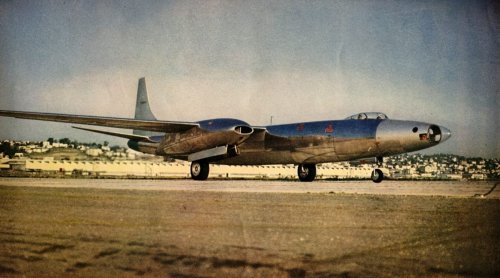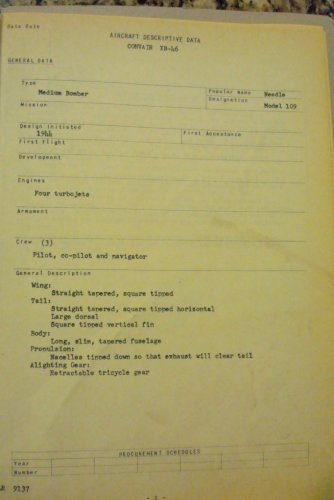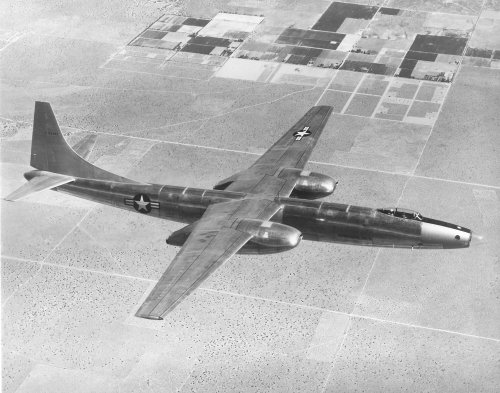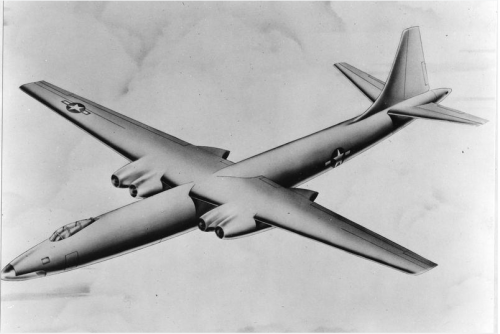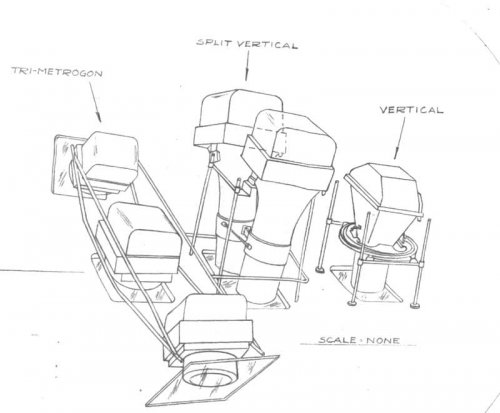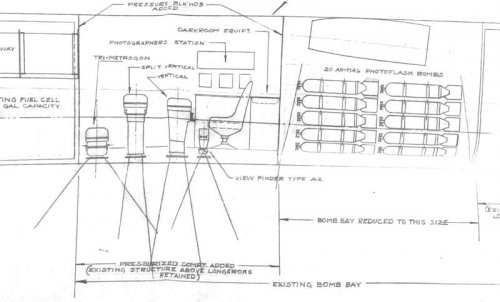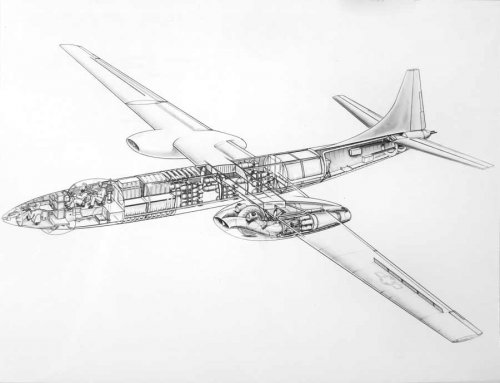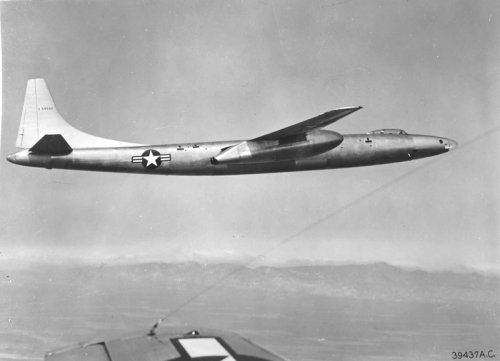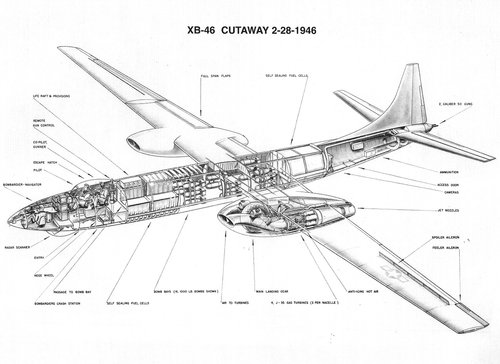CONSOLIDATED VULTEE
AIRCRAFT CORPORATION
GENERAL OFFIC ES
SAN DIEGO 12, CALIFORNIA
April 7, 1947
Brig. Gen. A. R. Crawford
Chief of Research & Eng. Div.
AC/AS-4
Room 4E144, Pentagon Building
Washington. D. C.
Dear Gen. Crawford:
Jet history was made on April 2 at our San Diego plant when America's fastest bomber, Convair’s XB-46, rocketed into the air on its first test flight. Aloft an hour and a half, the sleek bomber landed at Muroc Army Airfield where Convair will conduct future flight tests.
You may have noticed newspaper accounts of this first flight, but the XB-46 has two or three interesting features overlooked in the press reports I have seen.
The XB-46 is powered by four J-35 (TG-180) turbojet engines housed in two low-slung nacelles. This two-engine-per-nacelle arrangement, coupled with the extreme aerodynamic smoothness of the plane, makes the four-jet bomber look like a twin-jet fighter.
It is the first plane ever flown with a complete pneumatic system for actuation of landing gear and bomb bay doors. This high pressure system, faster and lighter than the conventional hydraulic type, opens and shuts the snap-action bomb bay doors in two seconds. It fully retracts the landing gear in five seconds.
The XB-46 has the world’s lightest self-sealing fuel tanks with new type gauges measuring mass instead of volume. The streamlined tricycle landing gear consists of nothing but a single oleo pneumatic strut and pin and socket latch on each wheel.
Although the performance of the XB-46 exceeds that of wartime "heavy” bombers, it is classified as a "medium" bomber by the AAF. The development of 10,000-mile super-bombers, notably Convair’s B-36, made it necessary to downgrade bomber classifications.
The needle-shaped fuselage of the XB-46 is 106 feet long, a scant seven feet less than its 113-foot wingspan and a startling contrast to stubby wartime bombers like our B-24 Liberator. Gross weight is 91,000 pounds and useful load, 42,982 pounds.
The take-off of the new jet bomber Wednesday was such an event that we let all of the employees out of the plant when the test pilot gave the word. (Many a closed-mouthed Convair employee has been secretly working on the XB-46 project for the past two years.)
These employees, as well as thousands of other interested spectators lining the fences around Lindbergh Field, were treated to a double feature. They saw the first flight of the Army Air Forces’ newest, fastest bomber and the second flight of the Convair-240, which has begun piling up hours in the air on a steady day-after-day schedule.
Enclosed are two photographs of the XB-46. one showing the takeoff. This new airplane has made all previous medium-range bombers out of date ----- just as the Convair-240 has outmoded
all twin-engine, non pressurized airliners.
Sincerely yours,
/S/
William A. Bless
Vice President - Sales
WAB:al
Encl.

